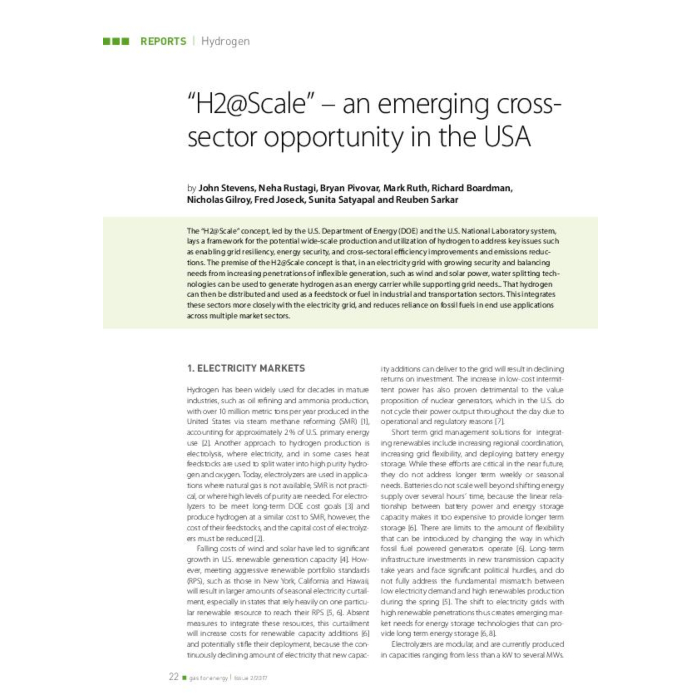“H2@Scale” – an emerging cross-sector opportunity in the USA
4,90 €
Auf Lager
Artikelnummer
00258_2017_02_01
The “H2@Scale” concept, led by the U.S. Department of Energy (DOE) and the U.S. National Laboratory system, lays a framework for the potential wide-scale production and utilization of hydrogen to address key issues such as enabling grid resiliency, energy security, and cross-sectoral efficiency improvements and emissions reductions. The premise of the H2@Scale concept is that, in an electricity grid with growing security and balancing needs from increasing penetrations of inflexible generation, such as wind and solar power, water splitting technologies can be used to generate hydrogen as an energy carrier while supporting grid needs.. That hydrogen can then be distributed and used as a feedstock or fuel in industrial and transportation sectors. This integrates these sectors more closely with the electricity grid, and reduces reliance on fossil fuels in end use applications across multiple market sectors.
| Autoren | John Stevens / Neha Rustagi / Bryan Pivovar / Mark Ruth / Richard Boardman / Nicholas Gilroy / Fred Joseck / Sunita Satyapal / Reuben Sarkar |
|---|---|
| Erscheinungsdatum | 01.02.2017 |
| Format | |
| Zeitschrift | gas for energy - Ausgabe 02 2017 |
| Verlag | DIV Deutscher Industrieverlag GmbH |
| Sprache | English |
| Seitenzahl | 6 |
| Titel | “H2@Scale” – an emerging cross-sector opportunity in the USA |
| Beschreibung | The “H2@Scale” concept, led by the U.S. Department of Energy (DOE) and the U.S. National Laboratory system, lays a framework for the potential wide-scale production and utilization of hydrogen to address key issues such as enabling grid resiliency, energy security, and cross-sectoral efficiency improvements and emissions reductions. The premise of the H2@Scale concept is that, in an electricity grid with growing security and balancing needs from increasing penetrations of inflexible generation, such as wind and solar power, water splitting technologies can be used to generate hydrogen as an energy carrier while supporting grid needs.. That hydrogen can then be distributed and used as a feedstock or fuel in industrial and transportation sectors. This integrates these sectors more closely with the electricity grid, and reduces reliance on fossil fuels in end use applications across multiple market sectors. |
Eigene Bewertung schreiben


